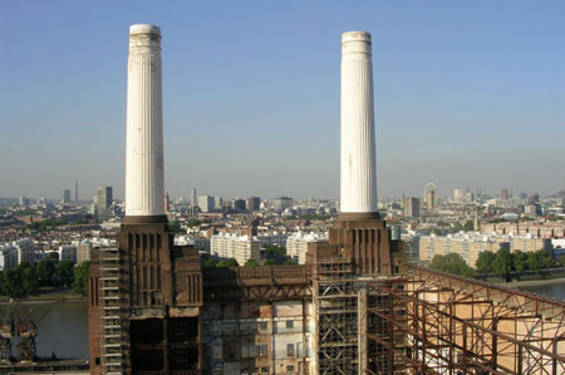This website uses cookies
This website uses cookies to enable it to function properly and to analyse how the website is used. Please click 'Close' to accept and continue using the website.



Parkview International Ltd, the company that owns the derelict Battersea Power Station, has applied for Listed Building Consent and Planning Permission to demolish and rebuild in replica all four chimneys of the Grade II listed building. Parkview claim in their application that the chimneys are suffering from severe concrete delamination and corrosion and cannot be repaired. The Twentieth Century Society and World Monuments Fund in Britain (WMF) dispute their findings and are currently in negotiation with Parkview and their team of experts. In our view wholesale demolition has not been justified by the investigations completed to date.
This view results from a specially commissioned critique of Parkview’s engineers’ report prepared for the Twentieth Century Society, the WMF and the Battersea Power Station Company Ltd. This study concludes that much of the cracking in the chimneys which is now causing concern occurred during the original construction process and has not significantly worsened in up to seventy five years. It also questions Parkview’s conclusion that cathodic protection, a non destructive repair technique, cannot be successfully applied. A further inadequacy in Parkview’s case is that their team have not had access to the inside of the chimneys in order to investigate the structures.
The Society also considers the brief set by Parkview unreasonable. It requires any solution to be guaranteed to last for at least 60 years without needing scaffolding to be erected for repairs.
If the chimneys were demolished a major proportion of the historic fabric would be lost and could never be replaced, and Battersea would lose value as a historic building. A decision about demolition should hence not be taken lightly.
The Society and WMF hope that further investigation and analysis will result in successful negotiations with Parkview and agreement on a scheme of repair.
Catherine Croft, Director, The Twentieth Century Society, tel 020 7250 3857, 07808 168 489
or Cordula Zeidler, Caseworker, The Twentieth Century Society, tel 020 7250 3857
William Black, World Monuments Fund, tel 020 7730 5344
Keith Garner, Battersea Power Station Company Ltd, tel 020 7585 0421
Brian Barnes, Battersea Power Station Company Ltd, tel 020 7627 5821

Become a C20 member today and help save our modern design heritage.